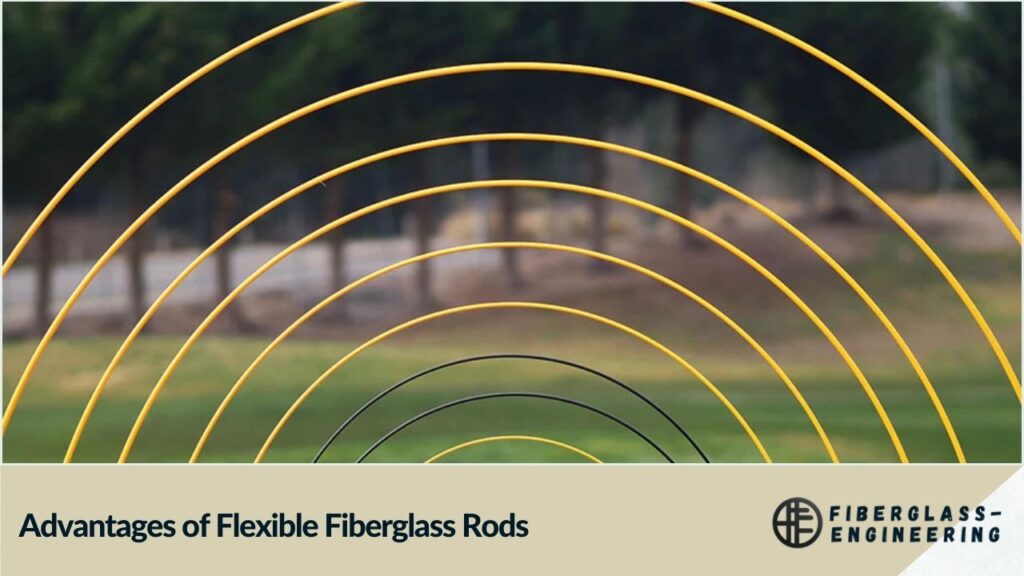Flexible fiberglass rods have become an indispensable component in various industries, offering a unique combination of strength, lightweight properties, and flexibility. These innovative materials are revolutionizing construction, manufacturing, and design processes across multiple sectors. In this comprehensive guide, we'll explore the characteristics, applications, and advantages of flexible fiberglass rods, shedding light on why they've become a go-to solution for engineers and designers alike.
Understanding Flexible Fiberglass Rods
Flexible fiberglass rods, also known as fiberglass poles or composite rods, are engineered materials composed of glass fibers embedded in a polymer resin matrix. This combination results in a product that boasts exceptional strength-to-weight ratio, durability, and flexibility. The manufacturing process, typically involving pultrusion or filament winding, allows for precise control over the rod's properties, making it possible to tailor the material to specific application requirements.
Key Characteristics:
- High strength-to-weight ratio
- Excellent flexibility and resilience
- Corrosion and chemical resistance
- Electrical and thermal insulation properties
- Dimensional stability
Applications Across Industries
The versatility of flexible fiberglass rods has led to their adoption in a wide range of industries and applications:
Construction and Infrastructure
In the construction sector, flexible fiberglass rods have found numerous applications. They are increasingly used as a superior alternative to traditional steel reinforcement in concrete structures. Their corrosion resistance makes them particularly valuable in marine environments or areas with high salt exposure. Additionally, these rods are utilized in the creation of lightweight, durable scaffolding and temporary structures.
Aerospace and Automotive
The aerospace and automotive industries benefit from the lightweight nature of flexible fiberglass rods. They are used in the manufacturing of interior components, structural reinforcements, and even in the development of advanced composite materials for vehicle bodies and aircraft parts. The high strength-to-weight ratio contributes to improved fuel efficiency and performance.
Sports and Recreation
Flexible fiberglass rods have revolutionized the sports equipment industry. They are extensively used in the production of fishing rods, offering the perfect balance of strength and flexibility needed for casting and reeling. In athletics, these rods are crucial components in pole vaulting equipment, providing the necessary spring and durability for high-performance jumps.
Electrical and Telecommunications
The electrical insulation properties of fiberglass make flexible rods an excellent choice for various electrical applications. They are used in the manufacturing of insulators, circuit boards, and as core materials in electrical cables. In the telecommunications industry, these rods serve as support structures for antennas and in the construction of lightweight, portable communication equipment.
Advantages of Flexible Fiberglass Rods

The popularity of flexible fiberglass rods can be attributed to their numerous advantages over traditional materials:
1. Exceptional Strength-to-Weight Ratio
One of the most significant benefits of flexible fiberglass rods is their remarkable strength-to-weight ratio. They offer comparable or superior strength to many metals while being significantly lighter. This characteristic makes them ideal for applications where weight reduction is crucial, such as in aerospace or automotive design.
2. Corrosion and Chemical Resistance
Unlike metal alternatives, flexible fiberglass rods are inherently resistant to corrosion and a wide range of chemicals. This property extends their lifespan and reduces maintenance costs, especially in harsh environments or when exposed to corrosive substances.
3. Flexibility and Resilience
The ability to flex without breaking is a key feature of these rods. They can withstand significant bending forces and return to their original shape, making them suitable for applications requiring both strength and flexibility, such as in sporting equipment or dynamic structural elements.
4. Thermal and Electrical Insulation
Fiberglass is an excellent insulator for both heat and electricity. This makes flexible fiberglass rods valuable in electrical applications and in scenarios where thermal insulation is required, such as in building construction or industrial processes.
5. Customizability
The manufacturing process of flexible fiberglass rods allows for a high degree of customization. Properties such as diameter, length, stiffness, and even color can be tailored to meet specific application requirements, offering designers and engineers a versatile material to work with.
Environmental Considerations
As sustainability becomes an increasingly important factor in material selection, flexible fiberglass rods offer several environmental benefits:
- Energy Efficiency: The lightweight nature of these rods contributes to reduced energy consumption in transportation and handling.
- Longevity: Their durability and resistance to environmental factors mean they need to be replaced less frequently, reducing waste.
- Recyclability: While not as easily recyclable as some metals, advancements in composite recycling technologies are making it possible to recycle fiberglass materials more efficiently.
Future Trends and Innovations
The field of flexible fiberglass rod technology continues to evolve, with ongoing research and development focusing on:
- Enhanced Performance: Developing new resin formulations and fiber arrangements to further improve strength and flexibility.
- Sustainable Production: Exploring bio-based resins and more energy-efficient manufacturing processes.
- Smart Materials: Integrating sensors and responsive elements into fiberglass rods for real-time monitoring and adaptive performance.
Conclusion
Flexible fiberglass rods represent a significant advancement in material science, offering a unique combination of properties that make them suitable for a wide range of applications. From construction and aerospace to sports equipment and electrical insulation, these versatile materials continue to find new uses and replace traditional options in many industries. As research progresses and manufacturing techniques improve, we can expect to see even more innovative applications for flexible fiberglass rods in the future, further cementing their position as a key material in modern engineering and design.
FAQs
- What are flexible fiberglass rods made of?
Flexible fiberglass rods are composed of glass fibers embedded in a polymer resin matrix. - How strong are flexible fiberglass rods compared to steel?
Flexible fiberglass rods can offer comparable strength to steel while being significantly lighter. - Are flexible fiberglass rods environmentally friendly?
They offer benefits like durability and energy efficiency in use, but recycling can be challenging. - Can flexible fiberglass rods be customized?
Yes, properties like diameter, length, stiffness, and color can be tailored to specific needs. - What industries use flexible fiberglass rods?
They are used in construction, aerospace, automotive, sports equipment, and electrical industries, among others.

